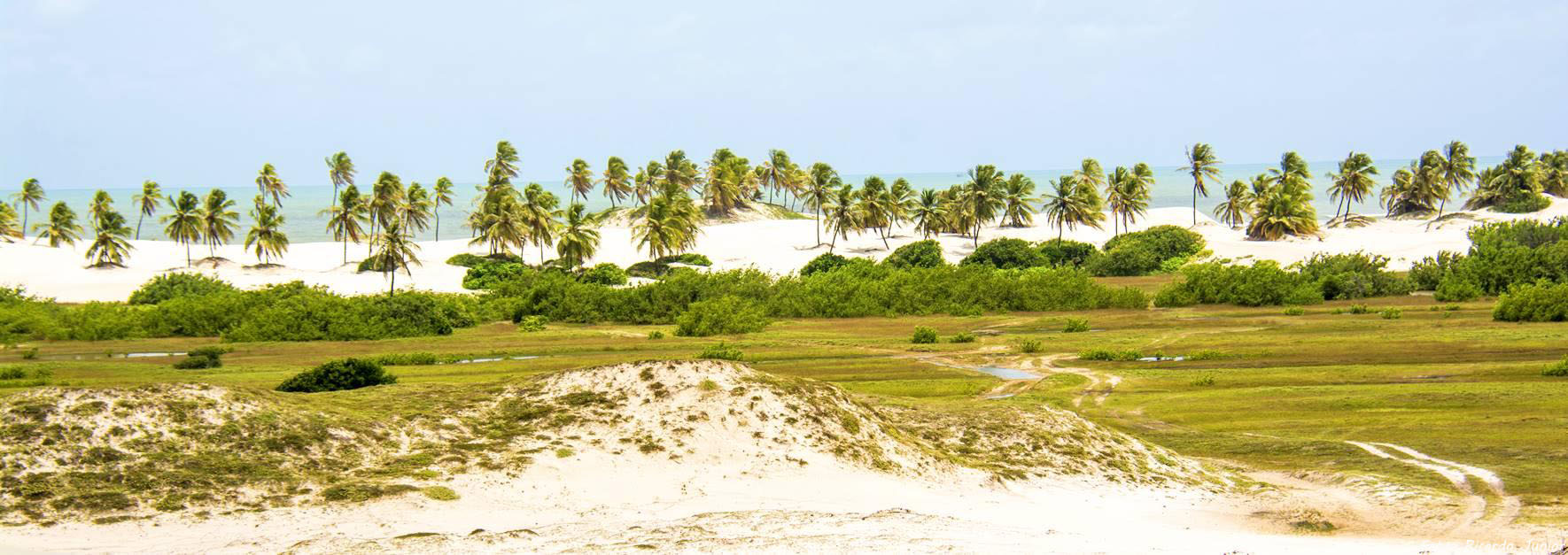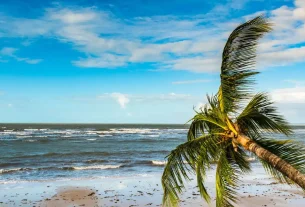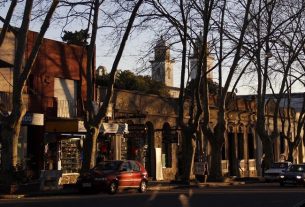On this page, you will find:
See too:
Mangue Seco is a village that deserves to be highlighted. The place was the setting for the broadcast of the soap opera Tieta, inspired by the work “Tieta do Agreste” by Jorge Amado. The footage showed all the beauty of the beach that gives the village its name, amidst immense dunes. The village is the last in the Coqueiros region, in the extreme north of Bahia and is located in the municipality of Jandaíra, which borders Sergipe.
Therefore, tourists from Aracaju, right next door, cannot resist the Mangue and travel a few kilometers to visit the rustic village. Some visitors to Costa do Sauípe and the famous Praia do Forte also take advantage of the pilgrimage to see the paradisiacal setting.
Although there are only two beaches there, the scenery makes up for it with the high dunes of Mangue Seco beach with strong waves at high tide and relaxing waves at low tide. Costa Azul beach is highlighted by the rich surrounding vegetation that includes coconut trees, valleys and mountains.
The beaches please both tourists, surfers and fishermen who also find their place there. Some strategically placed stalls serve tasty fresh snacks and cold drinks. Among the most popular attractions is the buggy ride through the dunes. This is actually the best way to access the beaches, especially at high tide.
The freshness of the seafood and fish is justified by the privileged region where Mangue Seco is located. The village is bordered by the Fundo and Real rivers, both of which are rich in marine and freshwater species, as they mix with sea water.
The first is known for housing manatees, only found in the Amazon River. Other fish found are stingrays, aratu, dogfish and carapebas. The second river, called Real, reveals a mixture of fresh and salt water that makes the ideal environment for bathing.
Being in Estância Bay, the region allows for the phenomenon of six rivers meeting the sea, they are: Real, Fundo, Piauí, Guararema, Priapu, and Saguí. It’s worth taking a boat trip along the rivers to enjoy the mangroves.
In the center of the village there is a central square, a small church and sandy alleys along the banks of the Real River. A few restaurants are located in the region, while inns are established on the way to the beaches. Tours around the site can be done on foot or by buggy, as cars are left in the city of Pontal, on the other side of the Rio Real, where you can cross by boat or boat.
The village of Mangue Seco stands out for its dunes, coconut trees and mangrove vegetation. It is close to the mouth of the Rio Real e Fundo, which allows relaxing baths in fresh water and contemplation of nature through rustic boat trips.
Known for its natural beauty, Mangue Seco also stands out for the rich quantity of marine species found in its waters, due to the meeting of the river with the sea, which is why it is a place for fishing and supplies restaurants with always fresh fish and seafood. The beaches have a wide strip of sand for walking, clear waters and high dunes that serve as viewpoints.
Tours
Two classic tours are part of the Mangue Seco itinerary. Taking a buggy is mandatory, as the best access to the Mangue and Costa beaches is through the dunes. Take the opportunity to visit some neighboring villages on longer tours. The second is optional, it is a boat trip along the Fundo and Real rivers, but it is extremely recommended for the mangrove landscape.
Buggy ride
Numerous tours around the Costa dos Coqueiros region are offered there. Tourists can visit Mangue beach and walk through the huge dunes or to the village of Coqueiros, nearby. Another longer tour of more than 3 hours can be done passing through Praia da Costa, observing the wreckage of a ship until Barra de Siribinha, a village right next door.
River tour
Some rivers cross the Mangue Seco region, the main ones are: Rio Fundo, which is one of the richest regions for fishing, being the only place besides the Amazon River where you can come across manatees, a species threatened with extinction and the Rio Real with slightly salty waters, perfect for diving. It’s worth a boat trip along the rivers to admire the richness of the mangroves and marine species.
The two beaches of Mangue Seco are enough to attract tourists passing through Bahia in the Costa dos Coqueiros region. Both are possible after a buggy ride, as they are surrounded by beautiful dunes. Rivers intersect the dunes, mixing with the sea and, in the background, coconut trees and mountains rise, making the view more enchanting.
Mangue Seco Beach
This beach is famous in the region for being home to immense dunes that stretch 30 km in length. Close to the river, it has calm waters at low tide, great for swimming. At low tide it is possible to see the wreckage of a ship on the way to Praia da Costa.
At high tide, strong waves break and invite surfers to practice. On this beach you can take a buggy ride through the dunes and rivers in the region. It was discovered in 1548 by priests and today is one of the main destinations on the Costa dos Coqueiros. Access from the village is via a walk along the riverbank and a sand path at low tide and a buggy at high tide.
Costa Azul Beach
The wide strip of sand makes the area ideal for walking. The sea waters are strong most of the time, attracting surfers. Access to this beach can be done by buggy.
The best time to fully enjoy Mangue Seco is traveling in summer or other mild seasons. This way, you can enjoy all the beaches with the sun shining. In summer, the village tends to receive more visitors, but nothing extraordinary, making it easy to find quiet spaces to relax. Avoid the months of April to June when it rains most in the region.
By airplane:
The closest airport to Mangue Seco is Salvador – Brazil.
By car:
You must follow the Estrada do Coco and then the Linha Verde until you reach Mangue Seco.
By bus:
From Salvador, use the company Expresso Linha Verde for the journey. Check departure times on the company website.
Distances: Salvador – 250 km / Estancia – 41 km / Aracaju – 114 km.
More information on the website: http://bahia.com.br/cidades/mangue-seco-jandaira
Did you like it? Share this article with your friends!

Sign up for our newsletter and stay up to date with exclusive news
that can transform your routine!
Warning: Undefined array key "title" in /home/storelat/public_html/wp-content/plugins/link-whisper-premium/templates/frontend/related-posts.php on line 12
Warning: Undefined array key "title_tag" in /home/storelat/public_html/wp-content/plugins/link-whisper-premium/templates/frontend/related-posts.php on line 13




